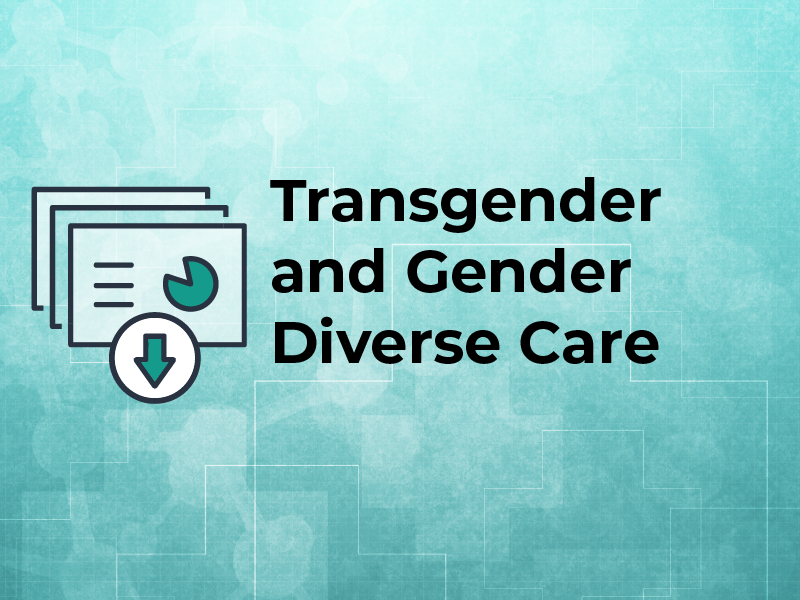Assessing Gender Euphoria To Enhance Transgender Mental Healthcare On Transgender Day Of Visibility

Table of Contents
Defining Gender Euphoria and its Significance
Gender euphoria describes the positive feelings and emotions associated with aligning one's inner gender identity with outward presentation. It's the joy, comfort, and sense of self experienced when expressing one's authentic gender. This is in contrast to gender dysphoria, the distress caused by a mismatch between one's gender identity and assigned sex at birth. While addressing gender dysphoria is crucial, focusing solely on distress overlooks the significant positive experiences that contribute to overall well-being. Understanding and actively promoting gender euphoria is vital for holistic transgender mental healthcare.
- Examples of gender euphoria:
- Feeling comfortable and confident in one's body.
- Experiencing joy and self-acceptance in self-expression (clothing, pronouns, name).
- Increased self-esteem and improved body image.
- Enhanced social connections and a sense of belonging within the transgender community.
- A reduction in anxiety and depression related to gender identity.
- The importance of focusing on positive experiences alongside addressing dysphoria: A balanced approach that acknowledges both the challenges of dysphoria and the joys of euphoria is essential for comprehensive care. Focusing solely on dysphoria can create a negative bias, neglecting the positive aspects of the transition journey.
- Gender euphoria as a key indicator of successful transition and improved mental well-being: High levels of gender euphoria often correlate with positive mental health outcomes, including reduced anxiety, depression, and suicidality. It serves as a powerful indicator of the effectiveness of gender-affirming interventions.
Assessing Gender Euphoria in Clinical Settings
Assessing gender euphoria requires a patient-centered approach that allows individuals to define their own experiences. Methods can include both qualitative and quantitative measures. It's crucial to create a safe and trusting environment where individuals feel comfortable sharing their feelings without judgment.
- Methods for assessing gender euphoria:
- Open-ended questions during therapy sessions: Encouraging narratives and detailed descriptions of positive experiences related to gender identity. Examples include: "Tell me about a time when you felt a sense of euphoria related to your gender," or "Describe what it feels like to express your gender authentically."
- Use of validated scales and questionnaires (if available and culturally appropriate): While specific validated scales for measuring gender euphoria are still emerging, researchers are actively developing tools to accurately capture this experience.
- Observational assessments of mood, behavior, and self-expression: Clinicians can observe changes in confidence, self-esteem, and overall well-being as indicators of increased gender euphoria.
- Importance of considering cultural and individual variations in expressing gender euphoria: Expressions of gender euphoria vary widely across cultures and individuals. It's vital to be mindful of these differences and avoid imposing preconceived notions about what constitutes "successful" gender affirmation.
Integrating Gender Euphoria Assessment into Treatment Plans
Assessing gender euphoria is not just about gathering information; it's about using that information to personalize care and create a positive feedback loop. By understanding what brings joy and affirmation, healthcare providers can tailor interventions to maximize well-being.
- Utilizing gender euphoria assessment to inform treatment goals and interventions:
- Tailoring hormone replacement therapy (HRT) to optimize both physical and emotional well-being: HRT can significantly impact both physical appearance and emotional experience. Monitoring gender euphoria levels can help fine-tune HRT regimens to achieve optimal results.
- Developing strategies to enhance self-expression and social support: This could include connecting individuals with support groups, assisting with name and gender marker changes, or exploring different forms of self-expression.
- Addressing barriers to gender affirmation and celebrating milestones: Actively working to remove obstacles to gender transition and celebrating achievements along the way can significantly enhance gender euphoria.
- Incorporating elements of positive psychology into therapy: Focusing on strengths, resilience, and positive emotions can complement the treatment of gender dysphoria and amplify feelings of gender euphoria.
The Role of Affirming Healthcare Providers
Affirming healthcare providers play a pivotal role in fostering gender euphoria. Creating a safe and supportive environment is paramount. Providers need to be knowledgeable about gender-affirming care, culturally competent, and actively work to reduce stigma and discrimination. This includes ongoing education and training to stay abreast of best practices in transgender healthcare. They should actively listen, validate experiences, and celebrate the positive aspects of the transgender journey.
Conclusion
Assessing gender euphoria is crucial for providing comprehensive and effective transgender mental healthcare. By understanding and actively measuring this positive aspect of transition, healthcare providers can tailor treatment plans to maximize well-being, fostering a more affirming and supportive healthcare experience. Focusing on both gender dysphoria and gender euphoria provides a complete picture of a person's mental health journey, leading to better outcomes and improved quality of life.
On this Transgender Day of Visibility, let's prioritize the assessment of gender euphoria to enhance the mental health support offered to transgender and gender non-conforming individuals. Learn more about gender-affirming care and advocate for policies that support the holistic mental health of our transgender community. Let's continue to work towards a future where the positive experiences of gender euphoria are central to the provision of excellent transgender mental healthcare.

Featured Posts
-
 Droits De Vote Eramet Accedez Aux Informations Completes
May 14, 2025
Droits De Vote Eramet Accedez Aux Informations Completes
May 14, 2025 -
 Lorraine Bracco And Brenda Vaccaros Nonna A Celebration Of Family
May 14, 2025
Lorraine Bracco And Brenda Vaccaros Nonna A Celebration Of Family
May 14, 2025 -
 Mission Impossible 7 India Advance Bookings Tom Cruise Film Sells 11 000 Tickets
May 14, 2025
Mission Impossible 7 India Advance Bookings Tom Cruise Film Sells 11 000 Tickets
May 14, 2025 -
 Enquete Sur Le Derapage Budgetaire Kohler Evite La Commission
May 14, 2025
Enquete Sur Le Derapage Budgetaire Kohler Evite La Commission
May 14, 2025 -
 Novakove Patike Luksuzni Modeli Od 1 500 Evra
May 14, 2025
Novakove Patike Luksuzni Modeli Od 1 500 Evra
May 14, 2025
